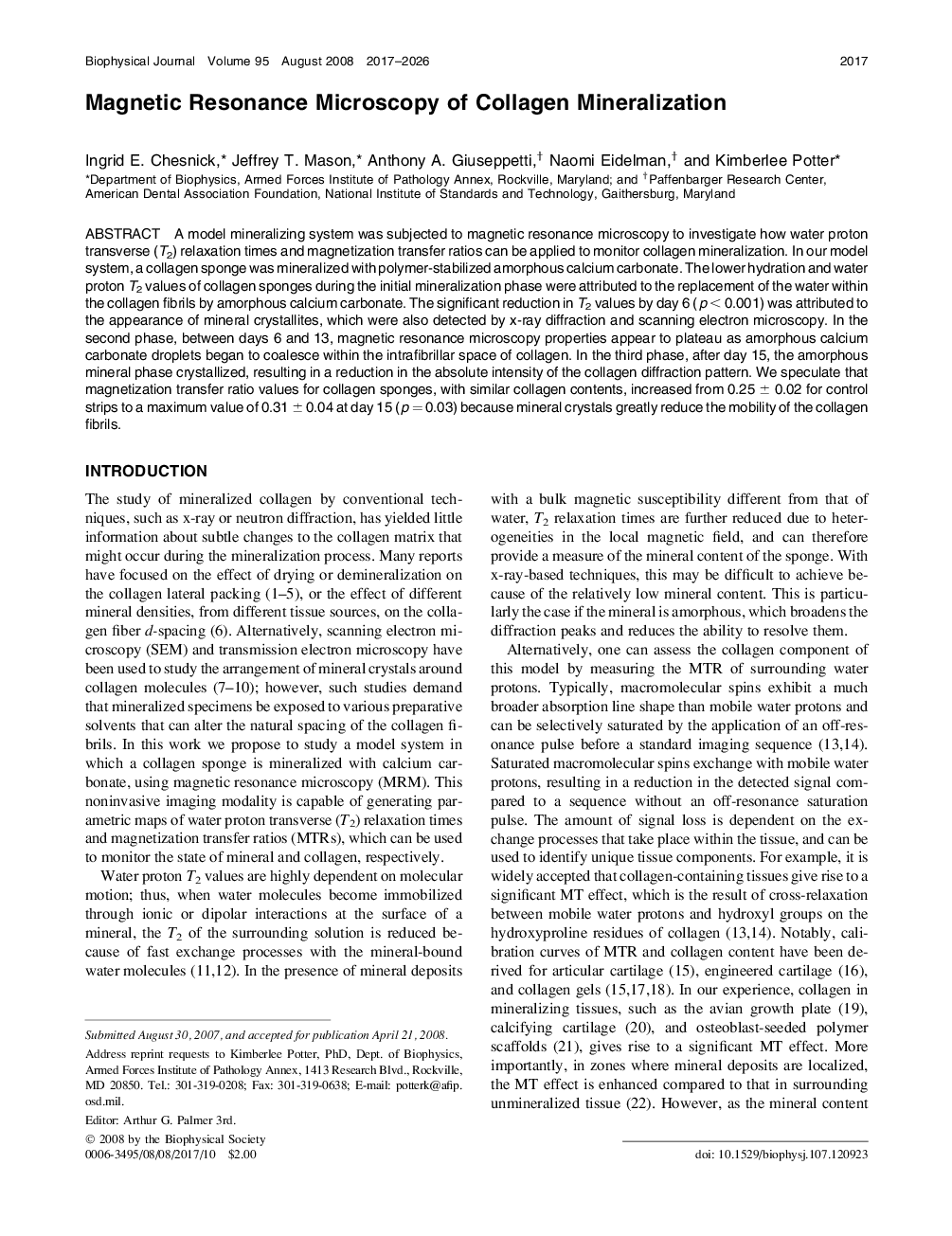| Article ID | Journal | Published Year | Pages | File Type |
|---|---|---|---|---|
| 1958480 | Biophysical Journal | 2017 | 10 Pages |
A model mineralizing system was subjected to magnetic resonance microscopy to investigate how water proton transverse (T2) relaxation times and magnetization transfer ratios can be applied to monitor collagen mineralization. In our model system, a collagen sponge was mineralized with polymer-stabilized amorphous calcium carbonate. The lower hydration and water proton T2 values of collagen sponges during the initial mineralization phase were attributed to the replacement of the water within the collagen fibrils by amorphous calcium carbonate. The significant reduction in T2 values by day 6 (p < 0.001) was attributed to the appearance of mineral crystallites, which were also detected by x-ray diffraction and scanning electron microscopy. In the second phase, between days 6 and 13, magnetic resonance microscopy properties appear to plateau as amorphous calcium carbonate droplets began to coalesce within the intrafibrillar space of collagen. In the third phase, after day 15, the amorphous mineral phase crystallized, resulting in a reduction in the absolute intensity of the collagen diffraction pattern. We speculate that magnetization transfer ratio values for collagen sponges, with similar collagen contents, increased from 0.25 ± 0.02 for control strips to a maximum value of 0.31 ± 0.04 at day 15 (p = 0.03) because mineral crystals greatly reduce the mobility of the collagen fibrils.
